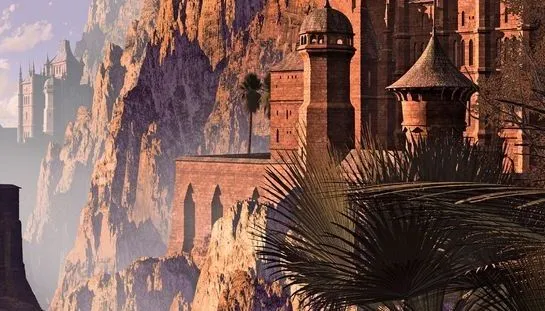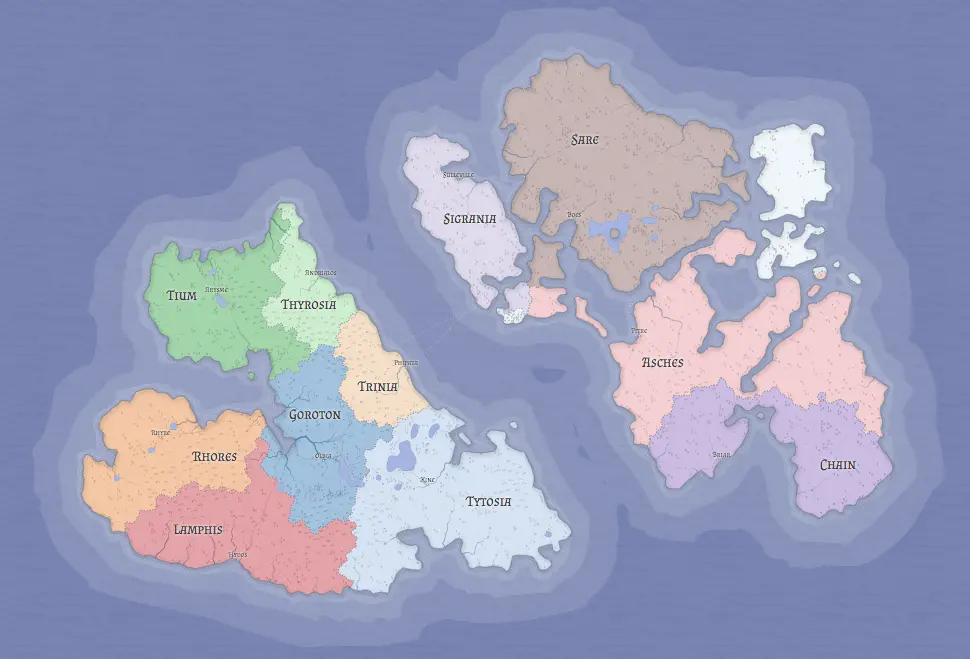Fantasy World-Building Tips for RPGs
World building tips for fantasy RPG's like D&D and Pathfinder
While world building for a fantasy RPG such as D&D or Pathfinder, think of yourself as a master weaver of a wall-sized tapestry. Most of the time, your players just see the back of it, and can't see the big picture of how things fit together.Occasionally they figure something out. And it's as if they see a small section of the front-side of the tapestry. It is those moments where your players will have those "aha" moments, filled with wonder.
To elicit this awe from your players, it helps to have certain aspects of your world fleshed out. And to follow certain practices while building your world.
You don't need to do all this work up-front before Session Zero. But you should build your world gradually as the PC's explore your world and go on adventures.
1: Build just one world and stick with it
The more detailed your world, the more immersive it becomes for your players. Since world building takes a lot of your time, it helps if you have just one world to build. It also helps to focus your efforts to near where the PC's happen to be to support the adventure.

RPG campaign worlds need a certain amount of detail to be fun. So many GMs prepare the entire plot line up front, including supporting maps, NPC's, etc.
The problem with this approach is if the players think of a completely different way of achieving the objective than what the GM did. This threatens to obsolete all or most of the prepared material. Worse yet, the GM may protect his investment by forcing the PC's to follow the planned plotline. This is called railroading; and players hate that. But there is another approach, one I call "Just-in- Time Worldbuilding", which is based on Just-in-Time manufacturing.
In Just-in-time (JIT) manufacturing, there is very little inventory of parts, and just the right amount of parts appear at the right spot in the manufacturing process at just the right time. Since JIT uses a "pull" system, where upstream processes dictate through signals how much to produce, instead of "push", where everything is planned up front, it easily adjusts to changes in consumer demand. A similar process can be employed when building campaigns.
When I GM, I don't lay out in advance a grand plan on exactly how the PC's are supposed to accomplish their goals. If I did, I'd be tempted to railroad the players if they try to deviate from my plan for them.
Instead, I detail history, items, groups, NPC's and places near where they're currently at and how they tie into the goals. Then I use those details to "wing it" during play based on what the players decide to do. I build these details around the PC's between sessions, rather than all in advance, so I can adjust to the PC's actions. This also minimizes the wasted material I created in case they do something I didn't anticipate. To figure out where the PC's will go next and what they plan to do during the next session, simply listen to them talk to each other. If they mention two or three possibilities, detail them all.
By anticipating where the PC's will go next and detailing just that, I give my players the false impression that my entire world is incredibly detailed and interconnected and the correct impression that they're in control of their actions. Just like in JIT manufacturing, this approach to worldbuilding fills in just enough detail (the places they are likely to go) at just the right time (before the next session) using upstream signals (what I hear the players discuss in the previous session and where their PC's are currently located and what they just did).
If you use these techniques, don't let your players know. As my brother once told me about being a GM, "Never let them see the man behind the curtain."
If you tire of your world, you may be tempted to start a brand new world. Doing this will make it harder to have the detail needed to create that sense of wonder from your players.
Instead, use that creativity to make up a different part of the same world, or a pocket dimension. Keeping it part of the same world allows you to intertwine the two parts later.
2: Remember that the PC's are the most important part of your world
Unless you want to jump straight to the action with Session Zero, PC's should always have a backstory. But you should have the player make one up before the next session.
And the PC backstory should always fit in with your world. Suppose the player decides that their character once attended a Wizard's College. If you already have one made up, then tell the player that's where their PC learned the craft of magic.
Now suppose the PC comes from a port city, but you don't have one already. Then world build with that player to make up the port city.
3: Use a World building tool
If you're like most world builders, you keep your notes in a haphazard collection of computer files and paper notes. Your computer files are in random folders scattered across multiple devices. You probably have multiple copies of many of these files... each slightly different.
A better way is to use a world building tool like Scabard.
4: Start with a starting village or town for your PC's
Worlds for RPG's tend to get built organically over time. So an ideal place to start is a starting village or town where the PC's first meet up. Not necessarily where they're from, but where they meet for their first adventure. So there should be a dungeon nearby that they can explore.
Every adventuring group has to start somewhere, be it a small keep on the borderlands with caves nearby, a village near a ruined moathouse, a port town with a supposedly haunted house on a nearby hill, or any of a dozen other settings. The small town or village with an inn for resting between adventures and a tavern for collecting rumors is essential to the adventurer's base needs. And creating such a starting settlement is important for the GM who is building a campaign for the players to explore.


 While world building for a fantasy RPG such as D&D or Pathfinder, think of yourself as a master weaver of a wall-sized tapestry. Most of the time, your players just see the back of it, and can't see the big picture of how things fit together.
While world building for a fantasy RPG such as D&D or Pathfinder, think of yourself as a master weaver of a wall-sized tapestry. Most of the time, your players just see the back of it, and can't see the big picture of how things fit together. 
